What Are the Most Effective Google Maps Scraping Techniques For Scalable POI Data Extraction?
July 17
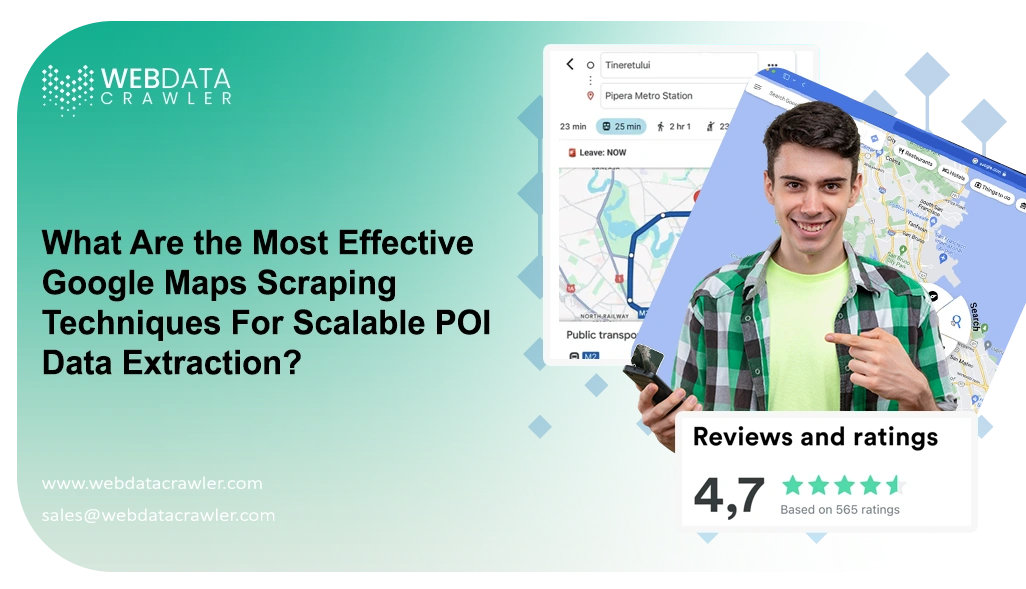
Introduction
In today’s data-first landscape, location intelligence has become a cornerstone of informed business decision-making. As consumer activity becomes increasingly tied to geographic context, the demand to Collect Location Data At Scale is more vital than ever.
Industries ranging from logistics and real estate to urban planning and retail rely heavily on precise, up-to-date insights. Through Google Maps Scraping, businesses can efficiently extract detailed and scalable Point-of-Interest (POI) data, fueling more innovative strategies and optimized operations.
For marketers, analysts, and founders alike, the ability to Scrape Business Listings From Google Maps is a game-changer. It opens opportunities to develop hyperlocal campaigns, map competitive footprints, identify underserved zones, and design efficient growth roadmaps. Let’s explore how today’s businesses extract POI data at scale, reliably, securely, and intelligently.
Why Do Businesses Depend on Scalable POI Data Extraction?
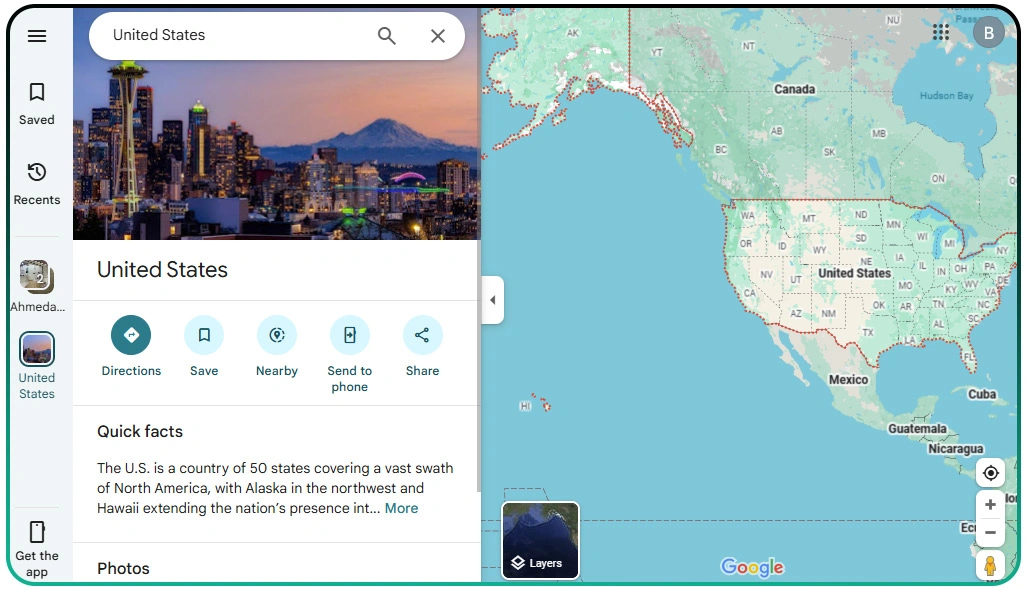
POI data plays a crucial role for businesses striving to stay competitive, informed, and strategically responsive. It includes location-based insights like retail stores, restaurants, banks, hospitals, and other landmarks. Companies use this valuable dataset to Extract POI Data From Google Maps and make smarter decisions across multiple sectors.
Its versatility supports multiple use cases:
- In-Depth Market Research: By analyzing dense clusters of POIs, businesses can pinpoint high-demand zones, identify gaps in service coverage, and forecast market potential with greater accuracy.
- Competitor Footprint Analysis: POI data enables organizations to map competitor locations in real-time, evaluate regional saturation, and gain visibility into competitive dynamics within target areas.
- Expansion and Site Planning: Whether launching a new outlet or selecting optimal franchise locations, POI data helps businesses assess traffic flow, nearby services, and accessibility to make evidence-based expansion decisions.
- Route and Delivery Optimization: Logistics and delivery-focused companies utilize POI clusters and geospatial insights for more intelligent routing, ensuring timely deliveries and reduced fuel costs.
As the demand for hyper-local insights increases, businesses are increasingly turning to Scalable POI Data Extraction from platforms like Google Maps to support data-driven strategies in real time. Whether for local targeting, infrastructure planning, or operational efficiency, extracting accurate POI data at scale empowers teams to make smarter, location-aware decisions.
Challenges in Large-Scale POI Data Collection
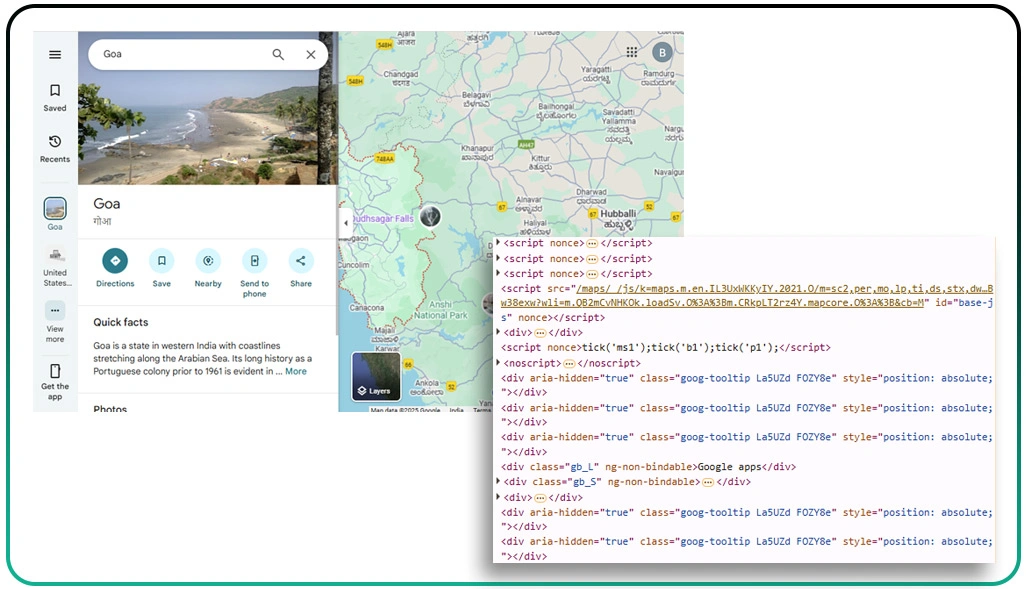
Collecting large-scale POI data is incredibly insightful but presents several significant technical and operational challenges that require advanced handling to ensure accuracy, speed, and scale.
- Dynamic Content Rendering: Modern mapping platforms like Google Maps are heavily reliant on JavaScript, with content such as business listings, reviews, and coordinates being loaded asynchronously.
- Rate Limits and Captchas: Attempting to collect high volumes of POI data without authorization can quickly lead to IP blocking, captchas, or even temporary bans. These anti-bot mechanisms are designed to disrupt automated access, making scalable extraction more complex.
- Geo-Spatial Complexity: The data involved is not limited to simple text. It includes coordinates, polygon boundaries, business metadata, real-time attributes, and user-generated reviews—spread across multiple layers and sometimes nested within map interactions.
- API Limitations: Although official APIs appear to be a straightforward solution, they often impose significant constraints, including daily quota limits, restricted endpoints, incomplete access to complete business details, and high usage costs for large-scale operations.
This is where strategic data acquisition methods come into play—leveraging advanced tools, rotating proxies, dynamic rendering engines, and optimized workflows to Scrape Business Listings From Google Maps at scale while preserving both data integrity and operational efficiency.
Proven Techniques to Extract Scalable POI Data Effectively
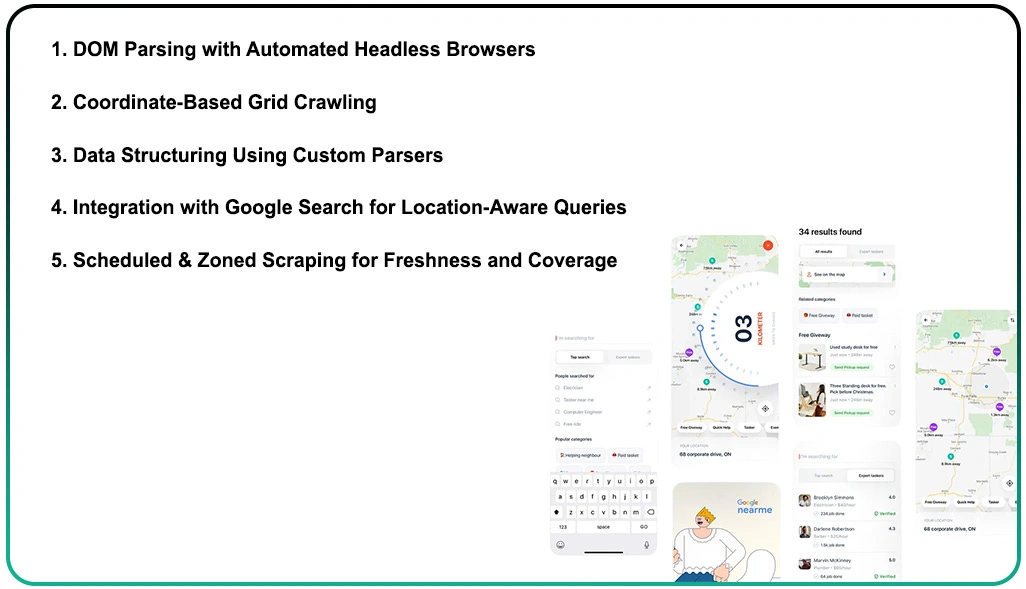
Extracting scalable POI data requires a combination of intelligent automation, efficient structuring, and geo-targeted strategies. Below are some of the most trusted and widely adopted techniques used by professionals to streamline POI data extraction and improve the depth and accuracy of their datasets.
1. DOM Parsing with Automated Headless Browsers
One of the most reliable methods for capturing dynamic web content is through DOM parsing using automated headless browsers like Puppeteer or Selenium. These tools replicate user behavior within a virtual browser environment, allowing full access to the dynamic elements of Google Maps.
Why it works:
- Enables interaction with complex UI components such as scroll areas, pop-ups, and modals.
- Effectively reveals all on-screen and hidden DOM elements.
Best suited for:
High-precision scraping of Google Maps business listings is ideal when you need store-specific metadata like working hours, review scores, and detailed address formats.
2. Coordinate-Based Grid Crawling
In this technique, a defined geographic area is split into latitude-longitude grid blocks. Scraping is then executed tile by tile across these grids to ensure complete area coverage. This is a powerful approach when you want to Scrape Coordinates From Google Maps while collecting relevant POI data in each section.
Key advantages:
- Allows exact geographic targeting at the micro level.
- Perfect for spatial analysis, including density studies and heatmap generation.
Common scenario:
Used by retail and franchise chains aiming to Collect Location Data At Scale to inform location intelligence and territory planning.
3. Data Structuring Using Custom Parsers
Scraping is only half the job—the real value lies in how the data is organized. Custom parsers are built to convert raw HTML or JSON into well-structured datasets. This is essential when doing Web Scraping POI Data 2025 style at scale.
Key data fields are typically structured:
- Business name
- Full address
- Contact and website
- Working hours
- Ratings and customer reviews
By using structured formats, teams reduce manual clean-up and improve integration with downstream analytics pipelines.
4. Integration with Google Search for Location-Aware Queries
An efficient, lightweight method involves integrating scraping logic with Google’s search query structure. Instead of navigating the complete map UI, scrapers send queries like “pharmacies near [lat, long]” via Google search URLs. This can yield POI results directly in the SERP or embedded map view.
Why it’s useful:
- Faster results without rendering interactive map layers.
- Great for pinpointing specific categories in targeted areas.
Note:
While effective, this method doesn’t always retrieve deeper information, such as user-submitted reviews or accurate GPS coordinates, limiting its utility for detailed profiling.
5. Scheduled & Zoned Scraping for Freshness and Coverage
Keeping POI datasets updated is just as important as collecting them. That’s where zoned and scheduled scraping strategies come in. Organizations often divide regions by pin codes, cities, or custom zones, and then rotate scraping tasks over set intervals.
Benefits of this approach:
- Ensures consistently refreshed data across large regions.
- Helps prevent overloading servers and breaching scraping limits.
Such disciplined frameworks are highly effective when you need to Scrape Business Listings From Google Maps consistently and at scale, without service disruption.
Google Maps API vs Scraping: What Should You Choose?
When it comes to accessing location-based data, developers and businesses often find themselves caught in the debate of Google Maps API vs Scraping. Each method comes with its advantages and challenges, depending on your goals, the scale of your operations, and the type of data needed.
Let’s dive deeper into a professional comparison:
| Criteria | Google Maps API | Scraping |
|---|---|---|
| Data Access | Structured, reliable, and updated directly by Google | Raw access to data visible on the front-end |
| Pros | Legal, consistent, minimal setup | Custom POI access, works well for hyper-local or niche data |
| Cons | Pricey at scale, limited requests, hides sensitive POIs | Needs regular maintenance, risk of ToS violations |
| Best For | Projects requiring compliance and global coverage | Local business data, granular research, or budget-limited use |
Choosing between Google Maps API and scraping techniques depends on your specific use case, data volume, and budget flexibility. For scalable POI extraction, scraping offers flexibility, while the API ensures legal compliance and ease of integration.
How Store Location Data Enhances Strategy?
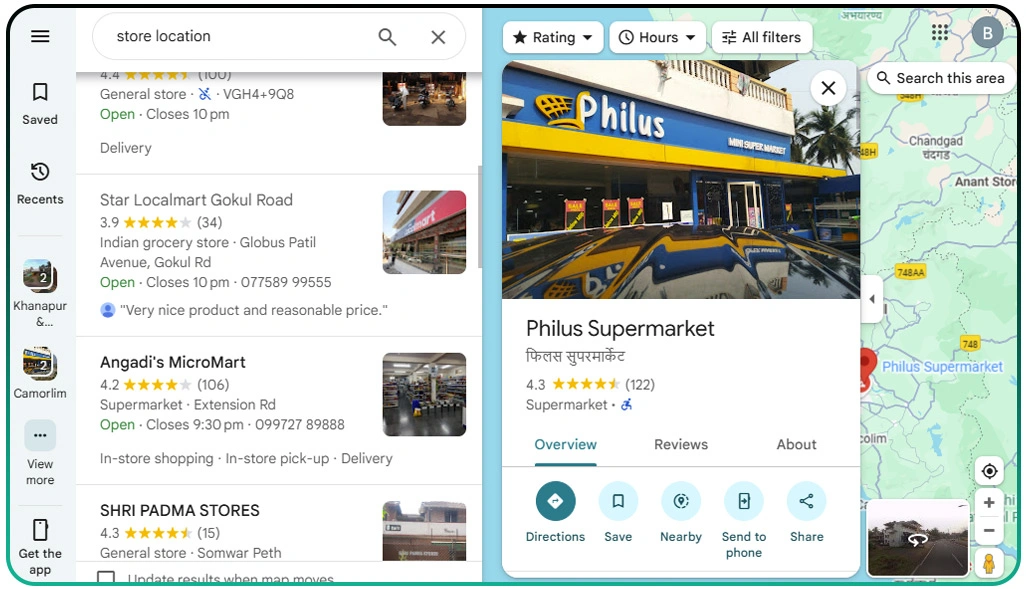
Modern retail, food delivery, and logistics businesses heavily rely on Scraping Store Locations From Maps to track brand footprints and competitors.
Let’s say you’re benchmarking grocery chains in a metro area:
- You need exact store addresses, operational hours, and service coverage.
- You extract this data for multiple brands and visualize overlap or market gaps.
- Insights help with store placement, ad targeting, and customer service reach.
With tools tailored for Google Maps Data Extraction Tool, businesses automate these insights and integrate them with dashboards, CRMs, or logistics systems.
Using POI Data for Precision-Driven Lead Generation
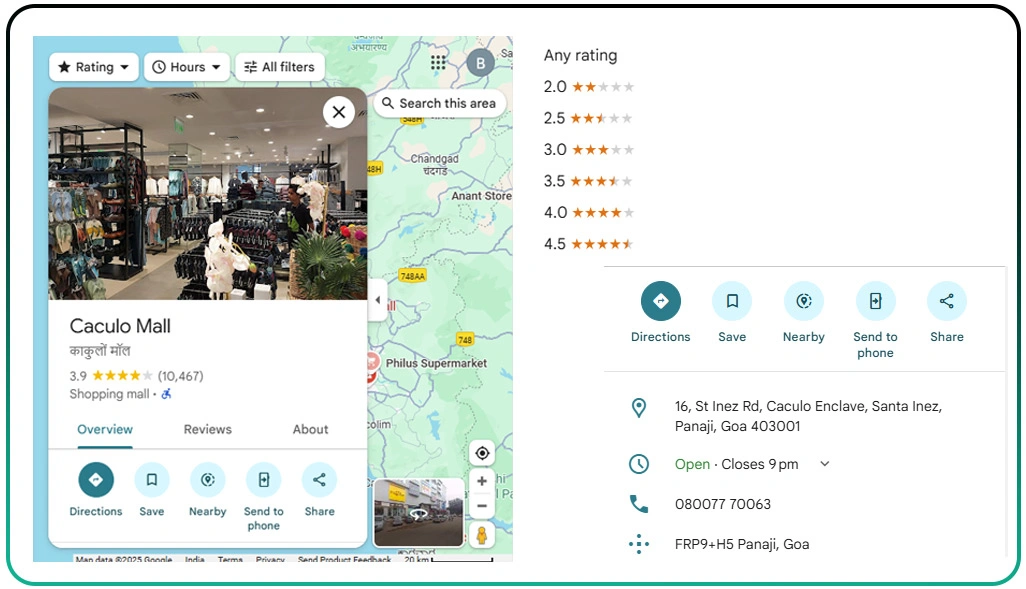
There’s a direct correlation between POI data and business development, particularly when the goal is Business Lead Generation From Google Maps, scraping offers high-volume, hyper-targeted datasets.
For example:
- A SaaS provider targets cafes, salons, or medical centers by scraping data from Google Maps.
- It then filters them by city, ratings, and business category.
- The sales team uses this curated list for cold outreach and demo scheduling.
Thus, Web Scraping POI Data 2025 style is not just about mapping—it’s a key source of ROI-driven lead pipelines.
Use Cases That Require Coordinate-Level Precision
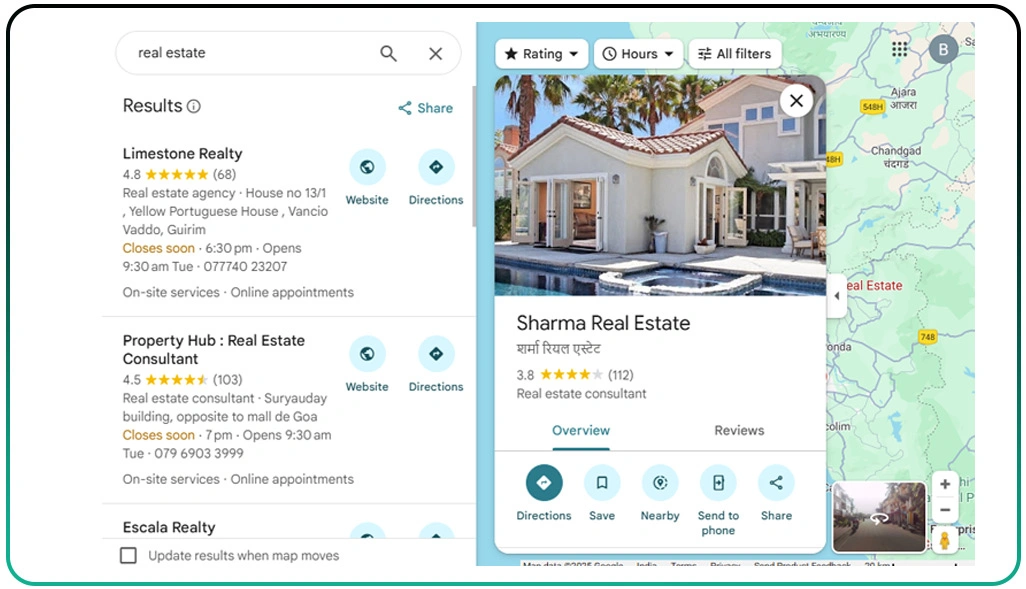
Some industries require not just business data but the exact geolocation of entities. Here, the ability to Scrape Coordinates From Google Maps becomes pivotal.
Applications include:
- Telecom: Tower deployment based on signal dead zones.
- Real Estate: Plotting schools, hospitals, and shopping areas near listings.
- Logistics: Creating geo-fencing protocols for delivery vehicles.
Even when you're working to collect location data, having accurate lat-long values can improve AI model training, routing decisions, and geo-tag-based alerts.
How Web Data Crawler Can Help You?
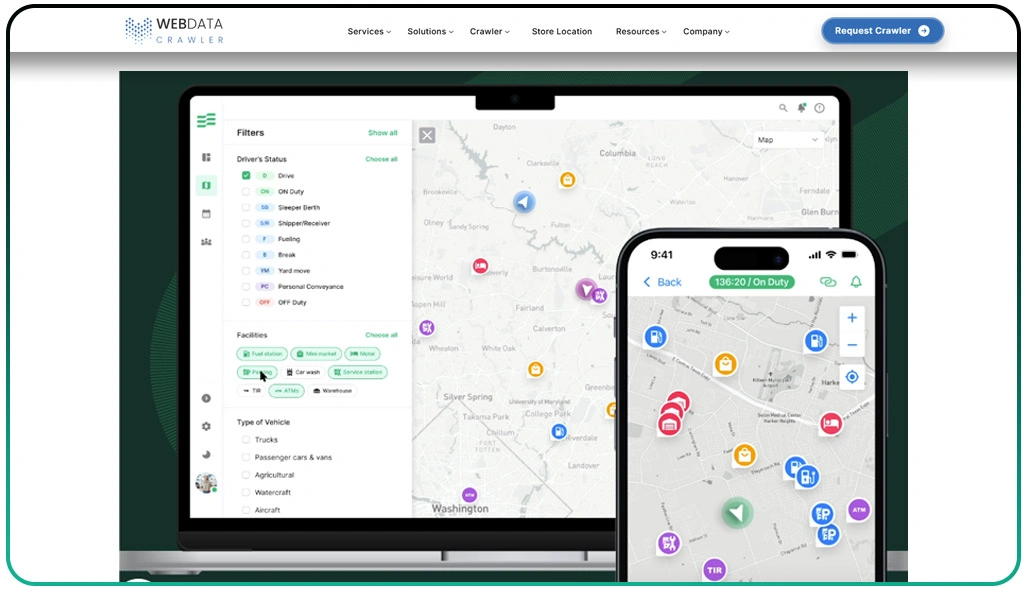
We offer tailored solutions designed to make Google Maps Scraping seamless, efficient, and scalable for businesses of all sizes. Our goal is to help you turn complex map data into powerful, actionable insights that drive more innovative strategies across marketing, operations, and business development.
Here’s what you can expect from our services:
- Customized scrapers for any city, niche, or business category.
- Bulk data delivery with structured formats and complete metadata.
- Regular updates and data freshness assurance.
- Geo-tagged results with ratings, contact info, and coordinates.
- Scalable solutions backed by robust automation tools.
- Data optimized for BI integration and real-time insights.
Whether you're targeting expansion, market analysis, or sales enablement, we help you Collect Location Data At Scale to fuel your success.
Conclusion
Extracting accurate and scalable POI data has become essential for businesses aiming to optimize operations, identify opportunities, and make informed location-based decisions. With the right approach to Google Maps Scraping, companies can unlock valuable insights that were once difficult to access.
Whether you're refining a local marketing strategy or planning regional expansion, having the ability to Scrape Coordinates From Google Maps can be a game-changer. Contact Web Data Crawler today and let our experts deliver the data solutions your business needs to move forward.